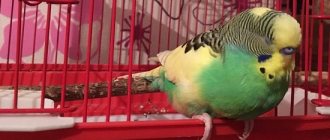A missing cat can be a pet owner's worst nightmare. After all, everyone knows the famous saying “Curiosity killed the cat.” Moreover, with more and more reports of missing cats, a natural question arises: why do cats go missing for several days?
Cats go missing within a few days if they have lost their way home and are unfamiliar with their environment. An unneutered cat or a cat that is in heat may go missing for several days while searching for a mate. Most cats return home within two days.
So let's start with why these curious cats go missing and other frequently asked questions about missing cats.
How long can a British cat go into heat?
In order to determine how long the period of festivities for a given breed can last, it is worth taking a closer look at the chronology of this event:
- When talking about how long a British cat’s estrus can last, they most often start from the moment of obvious signs such as uterine cries. In fact, it’s worth taking a closer look at the animal from the moment it eats more than usual, cuddles up to its owner, and often worries. In the British breed, like any other, this period usually does not last long - about a day or two.
- The next stage lasts on average 5-7 days. It was during this period that all the “heavy artillery” described above fell.
However, it should also be mentioned how long the very first heat lasts. It can be only 4-5 days. Therefore, in this case there is no need to worry - everything is within normal limits.
When does a cat want a cat for the first time?
In pets, puberty usually occurs between 6 and 10 months. Upon completion, the cat goes into heat for the first time. The animal demonstrates its readiness to mate in various pronounced ways:
- loud, inviting meow - the cat communicates its attempts to attract a potential partner by screaming and howling (how many days a cat screams when asking for a cat for the first time will depend on its individual characteristics);
- marks left on the floor of the apartment with a smell attractive to the cat (zoologists disagree about the secretions: some believe that the animal leaves them involuntarily, others deliberately so that the partner will find it along the “trail”);
- towards the owner, the cat usually begins to behave extremely affectionately - purrs and rubs against his legs, but sometimes, on the contrary, aggressively - hisses and attacks on the sly;
- Wanting to mate, the cat rolls on the floor and during periods of increased desire takes a special position: bends forward, lifts the back of the body, while pointing its tail to the side.
In addition, during this difficult period for her, the pet becomes indifferent to food - she eats rarely and little by little, or stops eating altogether. Also, observant owners may notice her frequent visits to the litter tray.
Escape Prevention
The departure of a beloved cat from home is accompanied by worries and worries on the part of the owners. Anxiety increases even more if the pet is absent for a long time. In most cases, escape can be prevented.
- In order not to lose your beloved pet during the mating season, you can resort to sterilization (castration). This operation is harmless and is performed in a veterinary clinic under general anesthesia. It makes it possible to rid the animal of attraction to the opposite sex.
- There are special medications (drops and tablets) for cats that interrupt sexual desire. But contraceptives do not always pay off. Also, it is worth considering that all medications have side effects. Therefore, before giving the drug, you should consult a veterinarian.
- Try to create conditions so that the pet cannot leave the house. Strictly monitor the front door; it is advisable to install a protective net on the windows.
Various superstitions and signs
Why are cats really afraid of cucumbers?
There are many signs associated with the death of cats. Here are some of them:
- If a healthy animal suddenly leaves home, this may portend the death of one of the owners. If a cat leaves home, the sign can be either joyful for the owner or negative. Pagans believe that animals sense trouble and run away from it.
- The cat senses death approaching the house and takes it with him, thereby saving one of the owners.
- Other signs indicate that the animal takes with it the negative energy of the house, not necessarily death. The deceased animal - the owner, as a reward for his love and care, receives one of the pet's lives.
- Leaving the house - space is freed up for a new tenant. Perhaps a child will soon appear in the house.
- An angry brownie, the presence of an otherworldly authority in the house. The cat understands that he cannot protect his family and for this reason he leaves the family.
- The cat left the house - a seriously ill family member will soon die.
Pet and superstitions
Many people, after their pet leaves, begin to look for the answer on the Internet: “missing cat: omen,” hoping to find at least some consolation and bring clarity to the sudden disappearance of their pet. Everyone decides for themselves how much to believe in omens. You should not immediately associate the loss of an animal with something bad and wait for the death of one of the household members. These are just signs, negative thoughts should not be allowed. This attitude will attract trouble faster than leaving the cat (which may yet return).
When does it happen for the first time?
The age at which cats begin to walk for the first time varies depending on the breed, health status and individual characteristics of the animal. In addition, the conditions of detention, genetic predisposition, season of birth, and the presence of a male nearby have an influence.
The norm is considered to be a period of six months to a year. If estrus begins before four months or does not begin until one and a half years, you need to contact a veterinarian. The cat may have serious disturbances in the functioning of the hormonal system.
Owners should keep in mind that the first heat does not mean that the cat is ready to bear and give birth to healthy offspring. Matings are prohibited during the first two or three heats. Pregnancy will be too serious a test for a young body and will most likely lead to complications.
Protracted estrus
If a cat does not exhibit sexual behavior for more than a year or, on the contrary, it leaks for 10-15 days in a row, this may indicate a malfunction in the body. In the case of the absence of estrus, the cause will be either hormonal problems, or problems associated with improper feeding and care, and this can also happen if the cat grew up without knowing what other felines are, or if there is little food in the room where she lives. Sveta.
Prolonged estrus may indicate ovarian pathologies, especially the presence of cysts and tumors. If this happens, this is an indication for castration. In addition, breeders noticed that the presence of a man in the house aggravates the estrus. No, it doesn’t have to be a cat, a human man is enough. Cats sense that this is also a male, which stimulates their sexual desire.
Why don’t cats live in the house for a long time, what does this mean?
Some homes do not accommodate cats. Superstitious people believe that pets are driven away by brownies or the spirits of once dead animals. Naturally, this opinion has no scientific confirmation. The only reasonable explanation for why cats often run away from home is that they are mistreated. Felines subtly sense the coldness of their owners.
It is unlikely that any animal will stay in a family for a long time when the lack of warm feelings is accompanied by constant screaming and humiliation. An unhealthy psychological situation in the house will also force the pet to leave it at the first opportunity, even if it is generally treated well.
How many days do cats ask for a cat?
If we talk about how many days a cat wants a cat, then the time varies for all individuals. For the first time, the pet usually walks for 5 to 7 days. There are animals that go into heat twice a year, but more often there are more active ones, “walking” once every 3-4 weeks with a heat duration of up to 10 days or more. Of course, all terms are individual and depend on the age and health status of the pet. The older the cat gets, the less often she begins to “flow” and want to mate.
In addition, many owners are interested in how many days a cat walks in March, since it is during this month that the animals’ reproductive instinct becomes more acute, and they often disappear from home. Usually this period lasts from 3 to 5 days, but it can drag on.
How to spot signs of a cat's imminent death in a timely manner
One of the most common reasons for animals leaving home is imminent death. This can happen to both a very small kitten and an adult.
In order to promptly guess about the imminent death of a pet and try to prevent it or alleviate the last months, days and hours, you need to know its signs.
Signs of imminent death of kittens
Sometimes kittens die. Newborns may die in the first hours or gradually fade away over the course of a week. Older kittens fight for life as long as they have enough strength.
Symptoms of early departure may include appearance - oily, unkempt fur, lethargy, refusal to eat.
In such cases, very young children remain close to their mother until the end, but slightly older ones, even at two months, can leave home. The reasons for the non-viability of babies are most often the following:
- oxygen starvation or hypothermia of the newborn has occurred;
- the kitten and mother have incompatible blood types;
- the birth process was extremely difficult;
- the female gave birth for the first time, she did not have enough experience to behave correctly;
- the kitten was born with a developmental defect incompatible with life;
- the baby was born with low weight;
- the female with the litter are in poor conditions, poor nutrition, insufficient care;
- the cat has an infectious or parasitic disease, the entire litter is infected in utero.
But in many of these cases, kittens can be saved.
Signs of impending death in an adult cat
An adult, middle-aged animal most often leaves to die. Natural instincts take over and the cat leaves its beloved owner. Often, before leaving, the pet does not leave the person’s arms, rubs and caresses, as if saying goodbye.
By the behavior of an elderly pet, you can see that his death is near and prevent him from leaving home. For a loving owner, it is important that in the last days the pet is surrounded by warmth and care.
Stages of estrus in cats
Estrus is divided into 4 phases. Even an experienced owner will find it difficult to distinguish one period of estrus from another. However, knowing the physiological characteristics of the mustachioed tabby, it will be possible to calculate a favorable date for mating, as well as avoid unpleasant incidents.
- Proestrus. This is the preparatory phase. It lasts from 1 to 4 days. You may notice changes in your cat's behavior. The pet rolls around on the floor, caresses its owner, and the first scanty discharge appears. At this stage, the female will not allow the cat to approach her, since she is not yet ready for fertilization.
- Estrus. The second stage is called the same as the entire cycle. The estrus itself lasts from 5 to 10 days, which largely depends on the breed. Under the increasing influence of hormones, it is already difficult for the cat to control its behavior - it screams day and night, and when stroked it takes a position characteristic of mating. Transparent discharge becomes noticeable. Planned mating or spontaneous mating occurs precisely during this phase.
- Interestrus, metestrus or post-estrus. The third period can take place according to several scenarios, depending on how the previous stage ended. If the cat had mating, during which fertilization occurred, then pregnancy occurs during metestrus, and after 60-70 days kittens will be born. There are cases when conception does not occur during sexual contact, and the pet develops a false pregnancy. This condition resembles a normal pregnancy in its symptoms, but does not end with childbirth and goes away after 30-45 days. If the cat has not had contact with a male, then over the next 2-15 days the attraction fades, interest in the opposite sex gives way to aggression.
- Anestrus. The final phase is called the rest period. The pet behaves in its usual way. The duration of anestrus can range from 3 weeks to several months. A cat that has given birth will have a longer period of calm than a cat that has not found a mate.
Sterilization
A pet during the “hunt” can cause a lot of inconvenience to its household members - the animal does not let you sleep and screams at night. And in the future, if it is not planned to breed her regularly, empty heats can greatly harm the cat’s health: such animals often develop various inflammatory processes in the reproductive organs, neoplasms and cancerous tumors.
You should not use chemicals that regulate sexual desire - they will do much more harm than good. Various herbal remedies can come to the aid of owners, however, the effect of their use is quite short-lived - furry beauties quickly get used to them and stop reacting.
In rare cases, it happens that a cat walks after sterilization. This happens in a situation where the animal has not completely removed all the ovarian tissue or left the uterus, and the necessary hormones continue to be released. To determine the cause, you need to take hormone tests - the animal may need another operation.
How to find a cat
If the animal still runs away, a search should be organized immediately. If this is a dacha or cottage community, then advertisements posted in places where almost all residents visit - near the store or the office - usually help you find a cat.
In the city, online advertisements on special websites and social networks will help you find a fugitive.
A cat that is allowed to walk outside on its own must be microchipped. Although the best option would be a collar with a tag that shows the owner's phone number and name.
You need to be especially attentive to your pet if there is a forest nearby. The cat's natural instincts will lead him there, and he will easily get lost.
If the pet is already old, then, first of all, you need to inspect all the nooks and crannies in the yard or garden - a sick animal usually does not go far, but looks for a secluded corner. It is important to remember that the cat's safety is in the hands of the owner.
How does a female feel during estrus?
Estrus or estrus occurs in three periods. The furry pet experiences each stage in its own way:
- Proestrus. The initial stage lasts about three days. At this time, hormones are released that prepare the animal’s body for mating and fertilization. These days, the cat walks with its knees bent, rubs against its owner’s legs and demands his attention. From time to time he begins to behave restlessly. She is not yet ready to mate, and therefore vehemently rejects the cat.
- Estrus. This is the most successful period for breeding animals. The female begins to actively invite the male. She is literally shaking from the inability to realize her instinct. The pet is experiencing real agony. Therefore, at this time you should not scold your pet under any circumstances. The period lasts about a week.
- Interestrus or meestrus. The stage lasts from two to ten days. If at this time a cat is brought together with a cat, then after ovulation sexual activity quickly decreases and disappears completely. After this, females begin to treat males aggressively. If ovulation occurs without fertilization, the cat may experience a false pregnancy. If there was no mating, the cycle will soon begin again.
- Anestrus. The animal returns to normal life and begins to experience sexual rest. This period usually occurs during the winter months.
We suggest you read: Vaseline oil for kittens, how to give dosage
The behavior of each individual during sexual activity is individual. But basically the behavior of females during estrus is approximately the same:
- Cats scream as if they are in pain, when in fact they are not in pain. Most often, periods of screaming occur at night, morning and late evening.
- The animal may lie flat, purring quietly, or be completely silent.
- The cat actively rubs against various objects.
- It scratches, bites, that is, it shows aggression.
- He goes to the toilet quite often.
- Refuses to eat completely or eats very little.
- Walks on half-bent legs with the tail held to the side.
- She licks under her tail several times a day as her vulva (external genitalia) swells and secretes a clear-colored secretion. Cats do not produce blood during estrus.
- The animal obsessively demands affection, literally not leaving the owner.
- Shows an abnormal interest in animals and male people. Sniffs their clothes and shoes.
- When stroking the area of the sacrum, it moves its tail to the side and squats, sticking out its butt.
Drops and tinctures
Most often, experts recommend using the following drops:
- "Stop stress";
- "Suprastin";
- "Anti-stress";
- "Cat Baiyun".
All of them are made from herbs. With their help, you can normalize the nervous system and relieve stress. The drops are quite harmless, however, their long-term use can lead to decreased immunity and disruption of the nervous system.
Pills
Contraceptives have a short-term effect, regulate the frequency of rutting and reduce libido. The most popular and effective tablets are:
- "Perlutex";
- "Anti-sex";
- "The ex";
- "CounterSex";
- "Stop-intimate";
- "Sex barrier";
- "Gestrenol".
Hormone injections are the most effective and, at the same time, the most dangerous method. Long-acting contraceptives relieve symptoms for six months or more. The most common of them are: Depo-Provera and Covinan. After their use, side effects may occur in the form of weight gain, lethargy, swelling of the mammary glands, purulent inflammation of the genital organs, ovarian cysts, and pyometritis. Experienced specialists prescribe such drugs only to those individuals who, for some reason, cannot undergo sterilization.
The main signs of a cat's heat
To prevent the pet from taking its owners by surprise, it is recommended to familiarize yourself with the signs of estrus in advance. The owner will immediately notice changes in the pet’s behavior, and drastic ones at that.
A walking cat is prone to affection
During heat, the cat becomes restless and sleeps less. She becomes overly affectionate, rubbing herself against her owners or furniture. During this period, the owner will definitely hear a piercing meow, loud rumbling or purring. All this is accompanied by a raised or sideways tail and an arched back. In the last few days, the cat may begin to squat, roll on its back, or lift its butt. The cat walks differently.
Note! Estrus is divided into three periods - proestrus, estrus and metestrus. Each of them takes from 2 to 5 days
Behavior changes depending on the stage of estrus.
There is no need to be afraid of loss of appetite; this is a common symptom when a cat is walking. The most active ones may scratch the walls or attempt to escape from the house to the street. The animal will be ready for mating only on days 2-4, when the estrus period begins. Only at this stage will she let the cat near her. If fertilization has occurred, then during the metestrus stage all instincts will disappear: she will stop screaming and worrying.
Despite the fact that estrus is usually accompanied by bouts of affection and tenderness towards the owner, it is stressful for the animal, especially for the first time. A pet who is walking for the first time may show causeless aggression towards others. Her emotional state leaves much to be desired: anxiety and irritability affect her behavior. In some individuals, the state of tenderness and complaisance will periodically be replaced by attacks of anger throughout estrus.
Why do young animals disappear?
When a young animal disappears, there may be several explanations in addition to the most common reasons:
Lack of life experience
The cat may jump from the balcony while hunting for birds or insects. In this case, he either falls to death, or the wounded man is unable to find his way home, finds himself in an unfamiliar place, and gets lost.
If there is a highway near the house, then a young animal running out of the house can easily end up under the wheels of cars traveling at high speed.
An inexperienced cat can become a victim of a pack of feral dogs. If he does not have time to climb the tree, then most likely he will not be saved.
Longing for the owner
If a beloved owner has died or left for a long time, the cat may simply leave out of grief.
Unfriendly atmosphere in the house
Frequent quarrels, shouting or even fights can easily provoke the departure of a cat, especially a young one. Sometimes cats acutely feel the “dislike” of one of their household members towards them.
How many days does it take to walk for the first time?
If a cat has started her first heat, this does not mean that her body is fully formed; everything should proceed like in all healthy females. The duration depends on the same internal and external factors, and especially on hormonal levels. Usually the first time a cat walks for 5 days. The normal duration in adult females is 5-10 days. If estrus lasts about 20 days, you need to show the cat to the veterinarian. This situation may mean a hormonal imbalance, the presence of a cyst, or diseases of the reproductive system. In rare cases, estrus for 20 days is considered normal.
Memo for the owner
As the animal enters sexual maturity, we have new concerns. You need to know not only how long the cat’s first heat lasts, but also about the physiological characteristics of your pet. In particular, that it is forbidden to bring a cat to a young cat. Individuals no younger than one year old are allowed to reproduce. Early labor can be too difficult and even cause the death of the mother.
If mating has taken place, consult your veterinarian. You can carry out sterilization and solve the problem with this and subsequent offspring. If the cat is valuable for breeding, then the pregnancy must be monitored using an ultrasound, and it is advisable to invite a veterinarian to the birth (in case of complications).
How to recognize that your pet is asking for a cat?
It is clear at what age cats begin to walk. But how to recognize this period? It's actually very simple. The owner will not be able to confuse this with anything else. The greatest sexual activity of cats is observed in the first months of the year: from February to April. But in October-November, the cat shows less pronounced readiness to mate. You can understand that a cat is asking for a cat based on certain signs.
How a cat behaves when it wants a cat is described below:
- Often, representatives of the cat family have a decrease in appetite during this period. And some individuals completely lose interest in food. Of course, this may also indicate that the pet is sick. Therefore, this sign should not be considered separately as an indicator that the animal is walking. Estrus is necessarily accompanied by other symptoms.
- The pet begins to scream and meow loudly. At first it may look very unusual. Therefore, when a cat starts asking for a cat for the first time, it may seem strange to the owner. But this is all natural - the cat's instinct kicks in. Thus, the pet attracts a potential cat to mate.
- The animal begins to leave marks throughout the house. Therefore, the answer to the question of whether cats mark territory like cats is a resounding “yes.” During the period of estrus, the pet begins to have special discharge. Some people believe that a cat leaves marks on the floor involuntarily. Others are convinced that in this way she attracts a male. But there is also an opinion that a cat during estrus marks the boundaries in this way, fearing that the cats will lay claim to her territory. Regardless of the actual cause, discharge in a cat during heat is normal.
- The pet becomes overly affectionate: it purrs loudly and rubs against the owner’s legs. True, in some cases aggression may be observed in her behavior.
- The pet begins to go to the toilet often in small ways. But why did the cat start peeing anywhere during her heat? This is due to physiological changes in the body.
- The animal begins to take characteristic positions for mating: it lowers itself on its front legs, and raises the back of its body, moving its tail to the side. Thus, the cat makes it clear to the male that she is ready for mating.
All these signs indicate that the pet has begun to walk. This is why a cat meows for no reason, rubs its legs and eats poorly. But soon this period will end, and the pet will become calm again.
You can simply determine the duration of estrus by observing your cat. But, as a rule, this process lasts about 10 days. Of course, some factors can also influence this period, reducing or increasing the time of estrus. It should be noted that if you do not breed the cat or do not take measures to calm her down, after 2 weeks the estrus may happen again. Read the article “How many days does a cat ask for a cat and how to calm her down?”
Do cats come home after they run away?
If your cat ran away simply because she wanted adventure or to mate, she will come home again. Moreover, if you have already experienced your cat going missing once and then returning home, you can be sure that she will come home again.
However, in some cases, such as if your cat ran away due to changes in the home environment, or in the worst case scenario, she was involved in a fatal accident, she will not return.
© shutterstock
Methods of castration
All surgical methods of castration are divided into bloody and bloodless. Bloody methods are classic operations, which in turn are divided into two types: open and closed operations. Bloodless methods are so named because the scrotum is not opened during the operation, and castration occurs by destroying the vas deferens, the appendage of the testis, or the testis itself.
Public method
Open castration is the main method. The scrotum is stretched so that the skin is well stretched over the testes. An incision is made parallel to the body, cutting through the skin and the general vaginal membrane. The testis is taken out and the common tunica vaginalis is cut off from the epididymis with scissors.
Holding the testis with one hand, the other hand pulls the scrotum to the inguinal ring so that the spermatic cord can be extracted as much as possible. A ligature is placed on the cord as close to the ring as possible. The cord is cut a centimeter closer to the testis. Then the wound is sutured. The second testis is removed in the same way.
Private method
Closed castration is used for animals with an intravaginal hernia or with wide inguinal rings, as well as for old cats. The scrotum is stretched so that the skin is well stretched over the testes. Only the skin is cut so that the overall tunica vaginalis remains intact. After which the latter is disconnected from the wall of the scrotum.
Then the common vaginal membrane together with the testis is turned 180°C, stitched with a silk thread and a ligature is applied as close to the inguinal ring as possible. Then the testis and appendage are cut off a centimeter below. The wound is then sutured. The second testis is removed using the same method.
Vasectomy
Sterilization using a gentle method involves partial bilateral destruction of the vas deferens, as a result of which the animal’s sperm do not enter the penis. In this case, the vessels and nerves are not touched, which is why the testes continue to function, and the animal survives the operation much easier.
Advantages:
- The testes continue to function.
- No major surgery is required.
- General anesthesia is not needed; local anesthesia is sufficient.
Flaws:
- Great cost.
- Careful care is required after surgery.
- Not all veterinary surgeons can perform a vasectomy.
- The cat will not stop marking his territory and behaving aggressively.
Non-surgical options
There are a number of non-surgical methods of castration without removing the testicles:
Castration by irradiation. It assumes the effect of radiation on the testes and appendages of the animal, which leads to an immediate decrease in sexual activity. The dose is chosen on a personal basis, based on size and age. It is not used now because testicular cancer often occurs after irradiation.
Chemical castration. Substances based on megestrol acetate are injected into the cat's body by injection or orally in tablet form. The drug has a great influence on the regulation of sexual behavior and suppresses sexual desire.
Chemical castration on implants. A method of suppressing reproductive capacity with the prospect of further resumption. A Suprelorin implant is injected into the skin. There is no allergy to the implant, since it is biologically inactive. The main active ingredient is deslorelin, which reduces sexual desire over a long period. Infertility appears 6 weeks after the injection. The use of implants is not popular enough due to limited production and significant price.
Microwave castration. Castration occurs when exposed to microwave rays. The result in this case, as with the surgical method, will become eternal. Microwave irradiation also requires anesthesia, since this process, although painless, requires long-term and absolute immobility of the cat. The method has been tested on farm animals, but has not yet gained popularity in veterinary clinics, since there are no studies on long-term consequences, and a microwave emitter is also required.
Advantages of chemical methods:
- Reversibility of the result.
- No preparation needed.
- There is no rehabilitation period.
- There is no risk with anesthesia.
Flaws:
- Reversibility of the result.
- It is necessary to constantly monitor the intake or effect of the drug.
- The risks have been little studied.
Alternative ways to resolve the heat issue
Modern pharmacology can offer pet owners to discourage their animals from any desire to flirt with the opposite sex, preserving their reproductive function. In this case, it is proposed to use two types of drops:
- Sedatives (in addition to ready-made pharmacy options, you can use folk methods in the form of chamomile or thyme decoctions);
- Hormonal (they will calm a walking animal by adjusting the animal’s hormonal levels).
If the animal is not valuable as a breeder, it is better not to torture it and castrate the cat. Unlike people, animals do not grieve over the loss of the opportunity to bear offspring, so the pet will not receive any mental trauma, but only peace for itself and its owners.
Cute kittens evoke affection among their owners. You want to admire them; it’s nice to play with the fluffy balls. However, babies grow quickly and become adults. The most striking stage in kittens growing up is puberty. Their behavior changes dramatically under the influence of sex hormones.
At what age do cats start walking? How can you tell if a female is in heat? How many days does a cat ask for a cat? How to calm your pet and reduce the duration of estrus? At what months can cats give birth?
A healthy adult cat has passed away - what should I do?
If an unneutered pet left home, it is possible that he began to estrus and went in search of a partner for mating. Pregnant pets often leave to give birth to offspring in a calm environment. A pet can also leave home due to poor treatment or the addition of another animal to the family. What to do when a healthy adult pet runs away? How can I get it back?
Will the animal find its way home?
Cats are territorial animals. They always strive to return to their habitat. Lost pets usually find their way home on their own. They are helped in this by vision, smell, hearing and memory. With the help of a keen sense of smell, they are able to detect the smallest concentrations of odorous substances and determine the location of the source of the smell. The hearing aid in cats is designed in such a way that they perfectly remember not just a “video sequence,” but a full-fledged “video clip” with a sound track. Thanks to this ability, they can reproduce it in memory, finding their way home.
The easiest way for a free-range pet to return to its native land is because, unlike a pet, it is familiar with the area. There are many stories about cats returning to their owners, traveling hundreds or even thousands of kilometers. There are even cases where pets returned to their owners 5 years after they went missing. Scientists have not yet been able to figure out how they do this. Presumably, cats use an electromagnetic field to orient themselves in space. How exactly they capture radiation is unknown.
How long can you wait?
If a cat is lost and has never been outside the home, the search should begin immediately after the loss is discovered. An animal not accustomed to the street may run away out of fear in an unknown direction and get into trouble. The more time passes from the moment your four-legged pet left home, the less chance you have of finding it.
Don’t panic and search the entire yard if your pet, which is free to go outside, went for a walk a few minutes ago. You should start searching if the animal has not returned by the end of the day. It is advisable to begin the search operation before dusk, so that the cat does not have to spend the night in the open air, and its owners do not have to worry all night.
Where to look for a pet first?
To return a pet, sometimes it is enough to search the home. Perhaps the cat did not go somewhere beyond its boundaries, but simply hid, for example, under a sofa, closet, bathroom, behind a curtain, in a box, on a sideboard or in a pantry. Some tailed pranksters like to hide in the washing machine. If the animal was not found in the house, you need to look for it:
- Under the windows. Perhaps your pet, while hunting for a bird or a sunbeam, fell from a balcony or window.
- At the entrance. If a cat sneaks through a slightly open door, it can be found on the upper or lower floor.
- In the attic, when there is easy access to it.
- In an open basement where a frightened pet that had fallen out of a window could hide.
- Under the cars. Frightened animals, once outside, look for secluded places.
- On the nearby trees. To escape from dogs, passing cars, and aggressive relatives, they climb higher.
- In neighboring areas. If a cat has disappeared from a private home, it may be hiding with neighbors.
- In buildings located in the local area: in a garage, bathhouse, barn, woodshed.
Main reasons
There are several reasons for this phenomenon. Usually they are based on instincts and behavior patterns provided by nature.
Sexual hunting
Young cats most often leave home in the spring due to sexual heat. Due to changes in hormonal levels, their body requires mating with a cat. At such moments, neither windows, nor doors, nor high fences can stop the pets. They go in search of their soulmate. Usually cats do not return home until the partner agrees to contact. If absent for a long time, the animal may become lost in space and time and not find its way home. Cats also sometimes leave the house to satisfy their natural needs. After a spree during estrus, get ready for the appearance of kittens soon.
Curiosity
Cats are inquisitive animals. This especially applies to kittens and young pets who are exploring the world around them.
Their attention is easily attracted by any objects and actions: a leaf falling from a tree, a butterfly or bug on the window, a rustling branch, etc.
In a fit of curiosity, the cat forgets about caution. He may jump out of a window or run outside the area in pursuit of an object, and only after a while discover that he is in an unfamiliar place
Sometimes finding your way home doesn't become impossible. An angry dog that chases the cat can make the situation worse. At first he experiences severe stress, and then gradually comes to his senses and looks for a new place to live.
He may jump out of a window or run outside the area in pursuit of an object, and only after a while discover that he is in an unfamiliar place. Sometimes finding your way home doesn't become impossible. An angry dog that chases the cat can make the situation worse. At first he experiences severe stress, and then gradually comes to his senses and looks for a new place to live.
Unfavorable atmosphere
Cats react acutely to the situation in the house
Most representatives love attention, care and affection from their owners. If an animal is beaten or abused in other ways, there is a high risk that it will wander away from home.
If there is an unfavorable atmosphere in the house, for example, frequent scandals, disagreements between family members and other problems, the pet will go in search of another place to live.
Loneliness
If other animals (puppies or kittens) appear in the house, the owners’ attention usually switches to them. The cat experiences loneliness, feels unwanted, so it leaves home in search of a better life.
A similar situation can arise at the birth of a child.
Before death
Furry pets often leave their homes before their death. To understand why cats leave home to die, it is necessary to study the behavior of their wild relatives. Lions are considered the strongest and largest representatives among cats. They live in prides. Young lionesses and lions obtain food and care for their offspring, providing them with protection from other predators.
When an animal begins to get sick or grow old, it cannot fully perform its duties, so it has to eat leftovers. Due to its weakness, it becomes a target for hyenas and other predators. In order not to bring trouble to the entire pride, sick and old lions and lionesses voluntarily leave the “family”. This way they give way to the young and protect them from attacks by predators. Natural instincts sometimes awaken in cats, and they leave their family and owners in order to protect them from perceived danger.
There is another explanation why cats leave home before they die. Some scientists believe that pets look for a secluded place to restore their strength and then return back. Although in most cases they go to Rainbow in a secluded place, and the owners do not even manage to find their corpse for burial.
Why did the kitten run away and disappear, what should I do?
Most often, kittens leave home. A small pet can disappear from both a private home and an apartment. Cats are very curious animals. Adults are kept from rash actions by caution, while young ones, due to inexperience, are able to follow their own curiosity without thinking about the consequences.
Something interesting is happening outside the open window, a bird has flown past, a sunbeam is teasing, a breeze is blowing a piece of paper along the ground - all this is unlikely to leave the baby indifferent, and he can, without hesitation, follow an object that arouses his interest, falling out of the window or into time for a walk, running away from home. If the window from which the baby fell is not high, it is unlikely to break, and if the territory of the house is surrounded by a fence, the tailed unfortunate will probably not escape beyond its boundaries.
If he is not found during the time until he gets used to the unfamiliar environment, he will come out of hiding and begin to explore the world around him. The craving for new knowledge can take him too far from home, especially if he is lost in the city.
Due to their inexperience, young cats have little chance of finding their way back on their own. To prevent your little pet from wandering too far, from falling under the wheels of a car, or from becoming a victim of stray dogs, you must begin searching for it immediately after discovering that it is missing. You need to look for it in secluded corners: near the entrance, under the porch of a private house, on the nearest tree. Hearing the owner's voice, the baby will most likely begin to meow pitifully.
When independent searches are unsuccessful, it is recommended to post missing persons notices in nearby yards. They should describe in detail the characteristics of the animal. If there is a photograph of a cat, you can ask local children if they have seen the kitten depicted in it. The sooner you start searching for your pet, the greater the chances of finding it safe and sound.
Deciding your future fate
If the cat is not sterilized and not satisfied over and over again, its hormonal levels will accumulate and sooner or later lead to a real explosion. The heats will come one after another at short intervals, sometimes just a couple of weeks, and then they will respond with terrible diseases - inflammation and cancerous tumors. This process can be accelerated by taking hormonal pills or injections, which do not solve the problem, but only interrupt the estrus, after which the next one comes even faster.
Yes, there are cats that live for 20 years - non-sterile and virgins. They flow as expected: several times a year and without any problems. And they take hormonal pills. And they are healthy almost until death, but they die, as they say, of old age. There are such examples, but these are exceptions. In most cases, the situation develops differently, as described above.
Hence the conclusion: either the cat must walk all the time and bring kittens, or she must be sterilized. To some, such a solution may seem inhumane, but, in fact, the cat will not suffer from an inferiority complex due to the fact that it cannot become a mother. But endless empty heats are physiological and emotional stress that causes severe suffering.
Author of the article Ekaterina Yugosh
– editor of the “Murkotiki” website, a journalist with a felinological education (a felinologist is a specialist who studies cats). She received her felinological education according to the WCF (World Cat Federation) system. She raises a Scottish Straight cat and a Highland Fold cat, as well as a Miniature Schnauzer dog. Her areas of in-depth interests include zoodietology and zoopsychology.
The period when cats begin to estrus indicates the maturation of the animal, its readiness to copulate and bear cubs. Mating of these animals occurs at the time when the female begins to estrus. In a maturing individual with good health, leading a calm and measured lifestyle, estrus begins no earlier than 10-12 months of life. The first heat in cats that lead a more active lifestyle and have a peculiarity in the form of hormonal imbalances may occur earlier than the specified dates.
The period when cats begin to heat indicates the maturation of the animal, its readiness to copulate and bear cubs
There are also exceptional cases when estrus occurs in four-month-old babies. Despite her young age, the female becomes pregnant. It happens that quite old cats, even at the age of 1.5-2 years, have never had estrus. The early onset of estrus in a kitten and its absence in a mature animal are deviations in the physiological development of the animal.
Mating of these animals occurs at the time when the female begins to estrus
When a cat's first heat begins early and lasts up to 9-11 months, it is advisable not to use such an animal for breeding. There is a theory that such deviations can be transmitted at the genetic level. If a cat's first heat begins earlier than the established normal period, this is a significant deviation in the development of the animal. A long duration of estrus in a pet with abnormalities at a young age is called “empty.” Such estruses have a detrimental effect on the health of the animal’s genital organs and can lead to purulent diseases of the uterus. Such diseases can result in death for a cat in a short period of time if you do not consult a specialist in time and do not perform surgical procedures.
To avoid such problems, kittens with hormonal abnormalities undergo early sterilization. All this is also done for the peace of mind of the owners - not every person is able to be indifferent to the behavior of the animal during this period. In this state, the cat behaves restlessly, screams, and makes special urges. Such urges are intended for a cat; these are sounds that are unpleasant to human hearing and do not allow others to relax. The period of such manifestations takes several days.
How to return a missing cat: folk methods
There are many popular ways to help find a missing pet:
- Place his favorite treat in the runaway pet's bowl and place a lit white candle next to it. After this, mentally turn to the Universe with a request for the return of the tailed family friend safe and sound. You should not put out the candle; it should burn out on its own.
- Place a glass filled with water near the front door, periodically saying the phrase: “To my house, to my threshold.” While pronouncing it, you should imagine in great detail how the pet enters the house.
- Tie a thread around the perimeter of the legs of the dining table.
- Standing with a lit candle in your hand near an open window or vent, say out loud “Smoke up the mountain, (animal name) home.”
The listed methods will seem strange to people far from superstitions. However, worrying about the fate of the missing four-legged pet, it is worth casting aside doubts and trying them out, what if something from the above will help return the tailed family member?
Believers try to stay away from such rituals. They prefer to light candles in church, turning to the Almighty with a request to be reunited with their beloved pet. Whatever method of returning the cat is chosen, one should not despair and stop believing that sooner or later she will find her way home on her own or with the help of caring people.
Source
How does estrus appear in a cat for the first time and when does it happen?
On average, the first heat in cats occurs at 6–10 months, but exceptions are not uncommon. There are cases of estrus occurring in both a 4-month-old female and a 12-month-old female. If a pet under six months of age is in heat, this may indicate hormonal disorders. Breeding animals with a similar problem are not allowed to breed. If the cat is more than a year old and the sexual cycle has not started, you should contact a veterinarian to rule out pathologies.
In addition to individual characteristics, the timing of puberty is influenced by:
Abyssinian cat
- Breed. Some cats native to Asian and African countries (Siamese, Thai, Abyssinian, Sphynx) mature early - at 5-9 months, British cats a little later - at 7-9. In large long-haired animals - Maine Coon, Siberian, Norwegian Forest, Neva Masquerade cats - estrus occurs late (at 9–15 months).
- Living conditions. Cats that live indoors and are provided with adequate nutrition come into heat earlier than those that live outside.
- Body type. Pets with impressive dimensions remain kittens longer than thin females.
- Length of daylight. The onset of sexual activity occurs in February-March; it can last until the onset of the cold period.
- Environment. Earlier, those females who live with other representatives of the cat family begin to ask for a cat.
It is not difficult to determine that a pet is asking for a cat: estrus is manifested by significant changes in behavior. In the phase preceding estrus, she begins to eat more, becomes more affectionate, rolls around on the floor, demands attention, especially from male representatives, and purrs a lot.
When moving to the next stage, transparent discharge appears from the vulva, the cat often licks the perineum, sometimes leaving wet marks behind it. When you touch the lower back, the cat takes a pose that looks like this: the animal bends its paws, marks time, raises its pelvis and retracts its tail.
When a cat walks, its appetite decreases. She begins to scream incessantly, not only during the day, but also at night. The pet visits the litter box more often due to frequent urination, and may go to the toilet in the wrong places. Some individuals, like cats, leave marks - they stand with their backs to a vertical surface, raise their tail and release a small stream of urine.
The severity of symptoms depends on the individual characteristics of a particular individual: sometimes it is difficult to understand that a female wants a cat, in other cases it is impossible to confuse this phenomenon with something else. If the pet is walking for the first time, external signs may be absent or mild: for example, some cats only become a little more affectionate than usual.











